Whose Hall is it Anyway? Annotation, Mutilation and a Mystery in our copy of 'The History of the University of Oxford'
4 Nov 2020|James Howarth
- Library, Arts & Archives
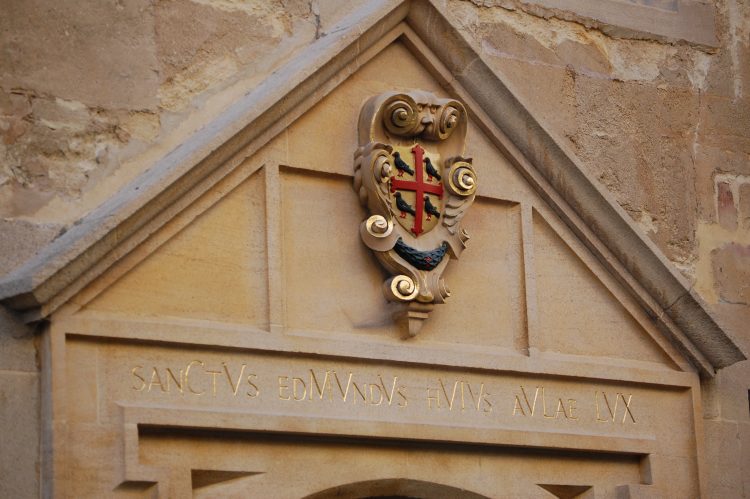
We rather glory in our connection to St Edmund of Abingdon. SANCTVS EDMVNDUS HVIVS AVLAE LVX (Saint Edmund, Light of this Hall) is inscribed about the entrance in Queens Lane. His coat of arms graces our shield. In happier times we feast on 16 November, his saint’s day, and the Choir makes a pilgrimage to his tomb at Pontigny Abbey each summer. However, the link between the Saint and the Hall has not always been uncontested.
‘The said Edmund (son of whom I know not)’: Another origin for the name of the Hall
While noting the tradition that the Hall was named for St Edmund was of long standing, such prominent early historians of the University as the 17th century antiquarian Anthony Wood and even the Hall’s own Thomas Hearne were sceptical of the veracity of the claim. Instead they saw the origin of the Hall’s name in another ‘Edmund,’ a presumed former owner of the buildings that became the nucleus of the Hall.
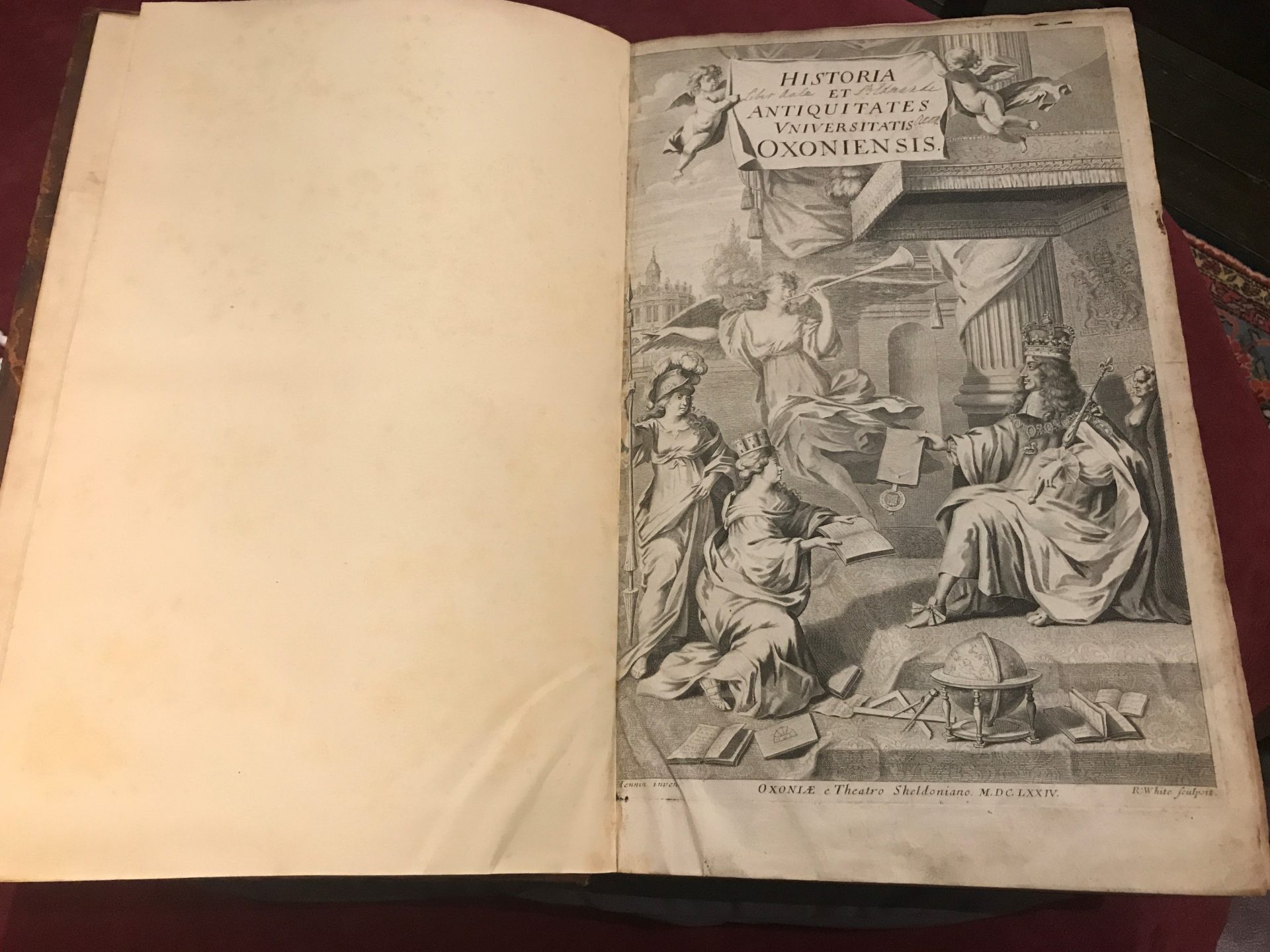
In his History of the Antiquities of the Colleges and Halls in the University of Oxford, Wood writes:
“..it was anciently no more than an ordinary Tenement, and that it was possest by one Edmund, an inhabitant or Burgher of Oxford in the beginning of Hen. III. ; and after his death by his son Ralph…So that, though it be sometimes written Aula Sancti Edmundi, yet generally Aula Edmundi only, as having been owned for divers years by the aforesaid Edmund, and his son Ralph, who had, as is before shewed, several tenements standing In or near the Churchyard of St. Peter’s, as this his tenement, called after his name, doth.”
This view persisted amongst some historians into the twentieth century. Principal Emden in his magisterial An Oxford Hall in Medieval Times devotes several pages to refuting Wood’s arguments, but after the publication of the book in 1927 he also entered into a furious debate on the subject across the letters page of several issues of the Times Literary Supplement.
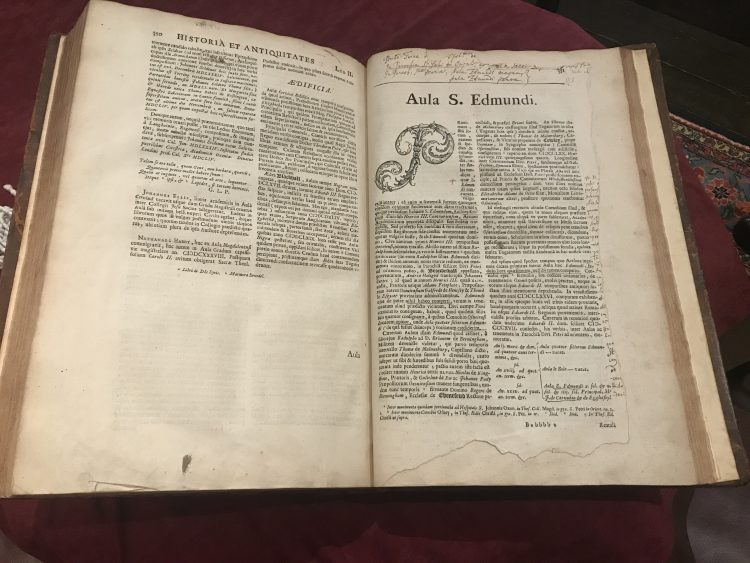
The Old Library copy of Historia et antiquitates Universitatis Oxoniensis
This academic dispute about the origins of the name of the Hall finds a vivid expression in the pages of our copy of the Historia et antiquitates Universitatis Oxoniensis, the Latin translation of Wood’s history of the University.
Our copy is largely unannotated until it reaches the entry for the Hall. Here in the margins of the text and the blank space at the end of the section one can see where a reader has engaged in a meticulous point by point defence of the Hall’s link to Saint Edmund. Specific notes are linked to the text by elaborate asterisks and many underlinings, there are several hand-drawn manicules (small drawings of a hand with one finger pointing).
Or rather, one could see this if someone had not torn most of the margin and its notes away from the pages of the book. The tear is not a neat job but savage and ragged. Only a long passage on the final page of the chapter is left unmolested (presumably because tearing it out would involve losing Wood’s text on the other side of the page).
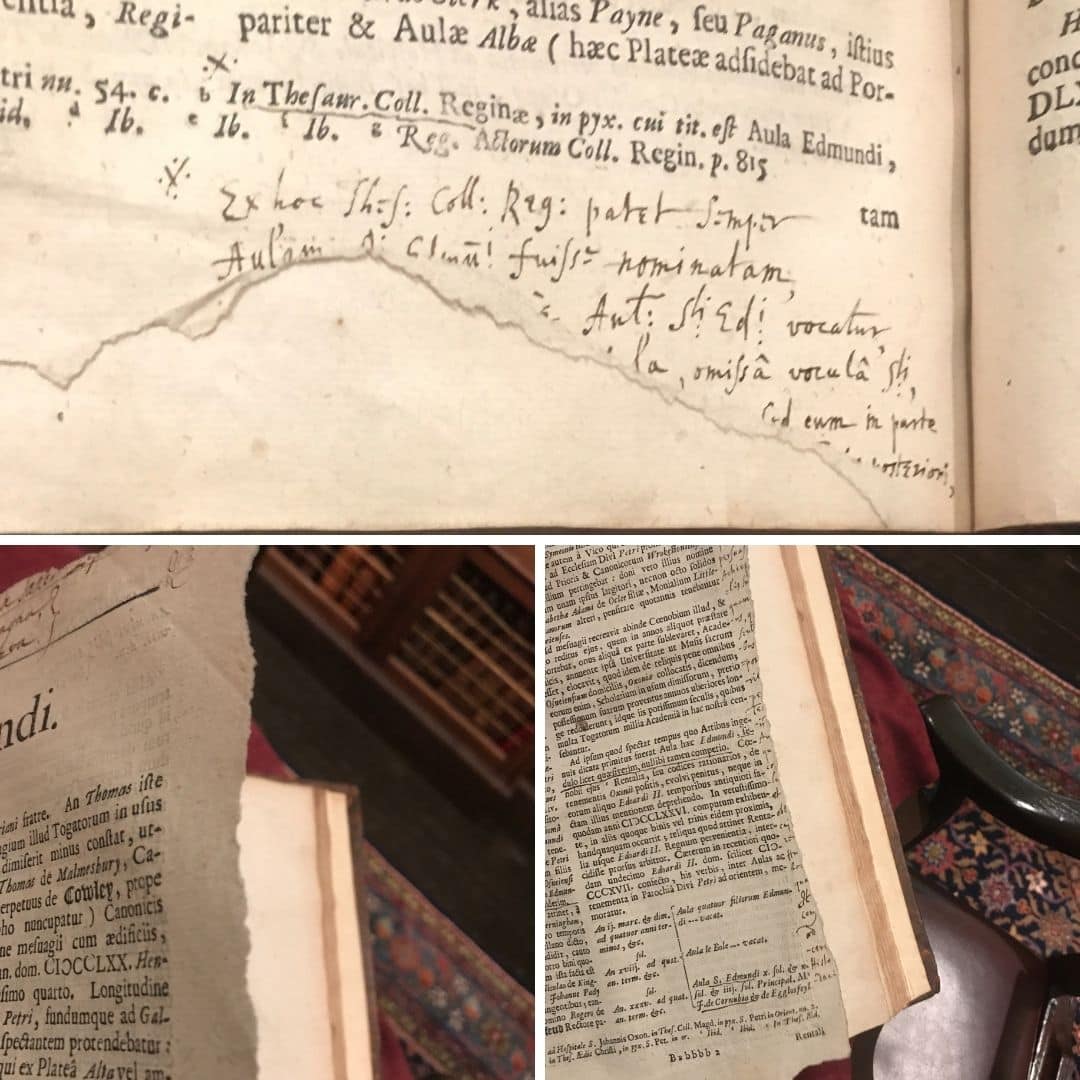
Remarkably, we know the circumstances in which these notes were made in the copy of Wood’s book. They were written in March 1712 by the Hall’s Vice Principal at the time Robert Pearce as part of an argument between him and Thomas Hearne. Hearne left a detailed account in his diary.
At this point Hearne, although he graduated MA in 1703, was still living in his rooms in Hall whilst working as a Librarian at the Bodleian and publishing editions of works by Tudor and Medieval historians. It was the one of these works that was the immediate cause of their dispute.
Hearne was in the habit of appending other interesting historical material in his editions to supplement the text. In the fourth volume of Hearne’s edition of John Leland’s Itinerary he included a list of Oxford Colleges and Halls made by the 15th century Warwickshire historian John Rowse. Rowse refers to the Hall simply as ‘Aula Edmundi’ (Edmund’s Hall) and Hearne, a strong proponent of Wood’s theory of the origin of the Hall inserted a note insisting on this form not St. Edmund’s Hall (“Rectre Edmund Hawle, non St. Edmund Hall” ‘rightly Edmund Hall, not St. Edmund Hall).


Pearse on discovering this was outraged by what he saw as a diminution of the Hall’s status and
“…he resents the Matter so much that he hath (contrary to his Oath) written some very silly, nonsensicall & & foolish Notes… in the Copy of Wood’s Antiq. & Hist. Univ. Oxon. in Edm. Hall Library, to which Book I had referred to shew that ’twas rightly call’d by Rowse Edm. Hall. Thus this silly Blockhead takes all Methods he can to expose himself. The said Notes as they are not sense, so neither are they Latin, & may be permitted to stand on purpose to shew the Silliness & Folly & Ignorance of the Man.”
“it being one property of a Whig to follow falshood, by no means to hearken to Truth”: The politics of the argument.
It may seem a slight overreaction on Pearse’s part to go such elaborate effort to counter a rather academic argument by someone who was only living in the Hall, but at its base this is a political dispute.
Hearne was a non-juror, that is he believed that James II had been unlawfully deprived of the throne and he refused to take an oath of allegiance to subsequent monarchs. This was an increasingly difficult position to hold in early 18th century England and indeed ultimately cost Hearne his job at the Bodleian in 1716. Many of the those interested in the Middle Ages and in antiquarian traditions has non-juring sympathies and as such the subject was regarded with some suspicion.
Pearse was very much part of the Low-Church, Whig faction in the University. For him, it seems to be the case that Hearne, with his anomalous position within the Hall, his independent publishing and his suspect politics was both an irritation and a danger. His annotations in the Historia are not just an assertion of the more noble origins of the Hall but also a public rejection of Hearne and his work.
For Hearne on the other hand Pearse’s reaction gets to the very heart of the political dispute. “…I]t being one property of a Whig to follow falsehood, by no means to hearken to Truth” he wrote. For him, scholarship and evidence matter, words matter. Otherwise one can simply adopt whatever is most expedient, accept as truth whatever is most useful in achieving your purposes, ignore any oaths that have become inconvenient. On top of that, as Hearne asserted, it was also plain bad scholarship “as they are not sense, so neither are they Latin.”
“…mad Pearce of Edmund Hall” 15 years of contention between Hearne and Pearce
Pearse was Vice-Principal of the Hall from 1705 until 1721 and he clashed with Hearne throughout the period. For example, in May 1712 (several months after Pearse had made the annotations in the Historia) Hearne records a rumour that:
“…Mr. Pearce, the Vice-Principal of that Hall, said lately that I ought to be expell’d for printing Mr. Rowse’s Account of the old Halls in Oxford, particularly because Rowse says what we call now Sti. Edmund’s Hall was only Edm. Hall…”
Earlier in December 1711, Pearse had accosted Hearne in his rooms about a supposed error in another of Hearne’s editions of Leland. Pearse had obtained a copy of a letter to Hearne from the Hall’s distinguished former Vice Principal White Kennett complaining that Hearne had implied Kennett to be the author of a scandalous note in John Rusworth’s Historical collections of private passages of state. Pearse went on:
“Dr. Kennett desir’d Mr. Pearce to past the said Copy sent to him in the first Volumes of the aforesaid History of England, provided we had any one in the Hall-Library, as we have not ; that it may be an Argument to all that look upon it of his Sincerity, Honesty and Fair-Dealing.”
Hearne was wrong about the Hall Library having no copy of the book however and a copy of the letter rebuking Hearne (written in Pearse’s hand) can still be seen in our copy of Rushworth’s book.
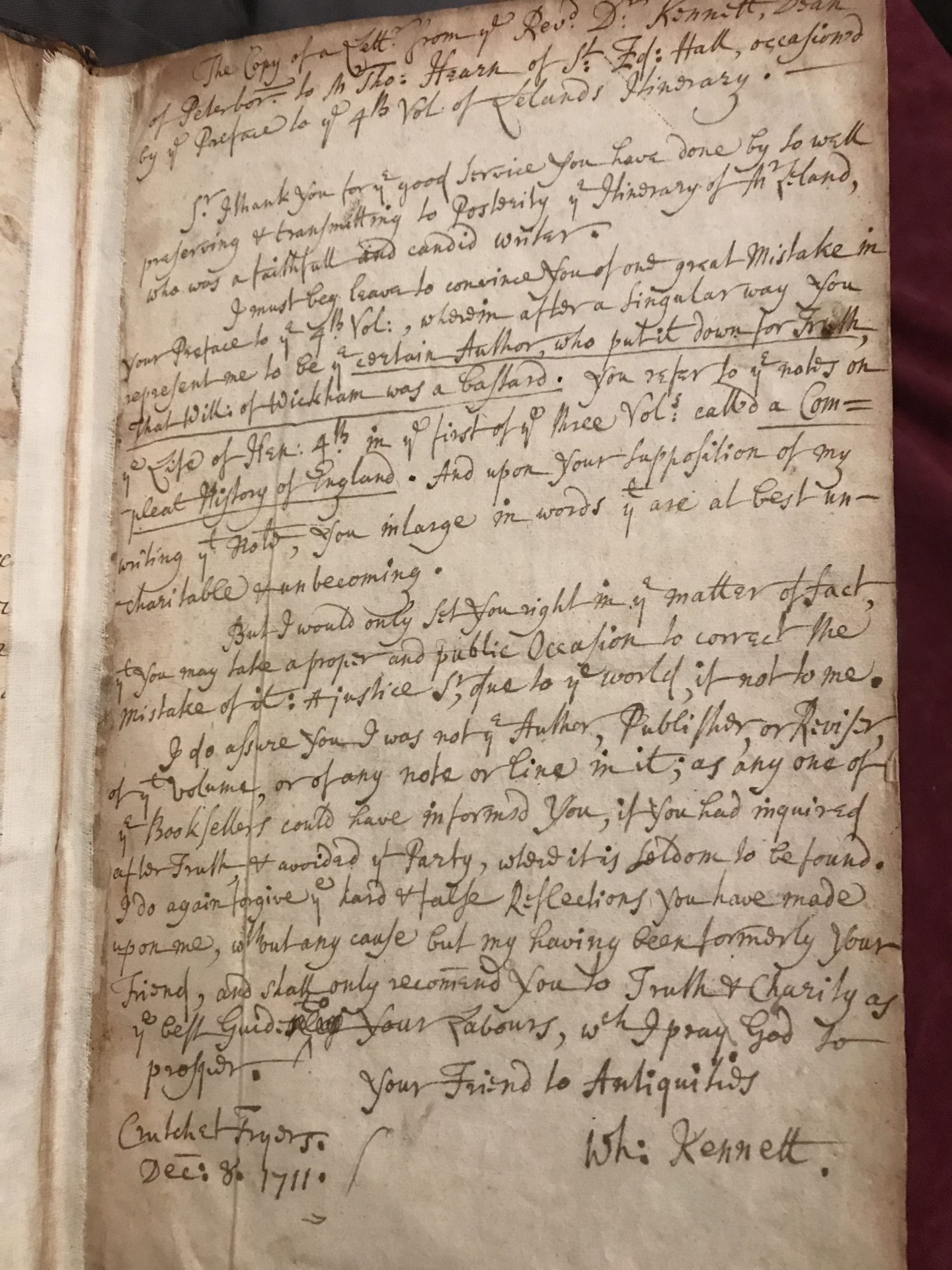
Hearne greeted Pearse’s appointment in 1705 with dismay, arguing that an Aularian should have received the post (Pearse had matriculated from Lincoln College) and his opinion never really altered. Pearse is “white-liver’d, sniveling, conceited & ignorant as well as fanatical…”, “this conceited rebellious Coxcomb”, “impudent, haughty, pragmatical, Pert”, “…a black, thin, tall, meagre fellow, & of such a malicious & ill-natured look..” and frequently “mad.”
Hearne is scathing of four sermons that Pearse publishes. He records with glee Pearse coming home drunk at two in the morning and being locked out of Hall. A rumour that Pearse is importuning a young female parishioner of St. Peter’s with love letters is recounted with much amusement as is Pearse’s outrage as a satiric account of it in a poem called Merton Walks and the subsequent collapse of attempted court cases against both the girl and the publisher of the poem. In November 1720 Pearse finally got preferment from Lord Lechmere and White Kennett and departed for a parish in Lincolnshire. Hearne notes his subsequent return two months later at 8pm on 5 February 1721 without comment, but rather pointedly.
Yet despite this animosity is played out in a very civilised and collegiate way that perhaps would not be too unfamiliar even in a modern SCR. Pearse and Hearne chat in his rooms late at night. Pearse votes for Hearne in a university election in 1715. Hearne frequently commends Pearse’s learning and Pearse brings him interesting old manuscripts and scraps of information.
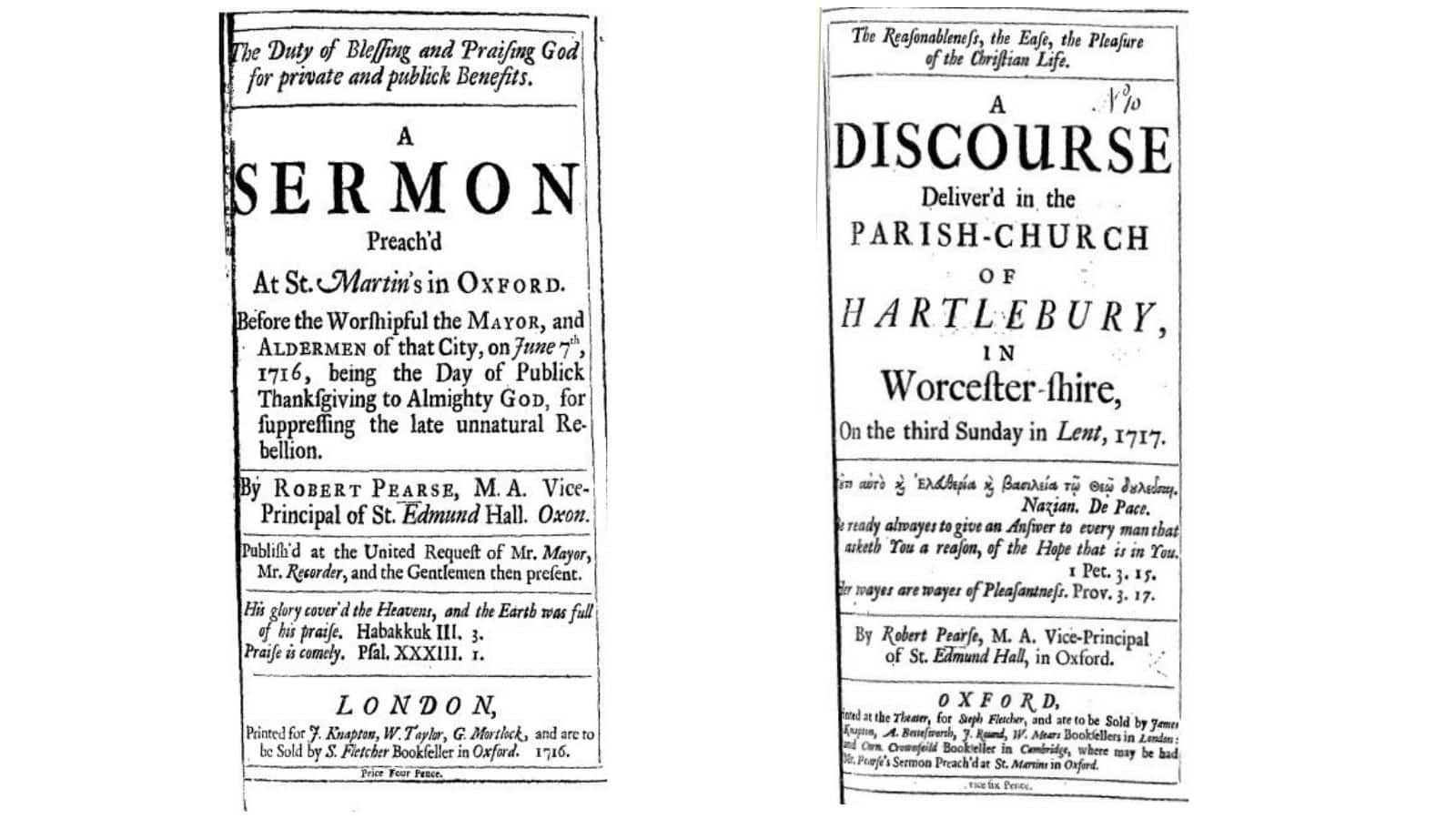
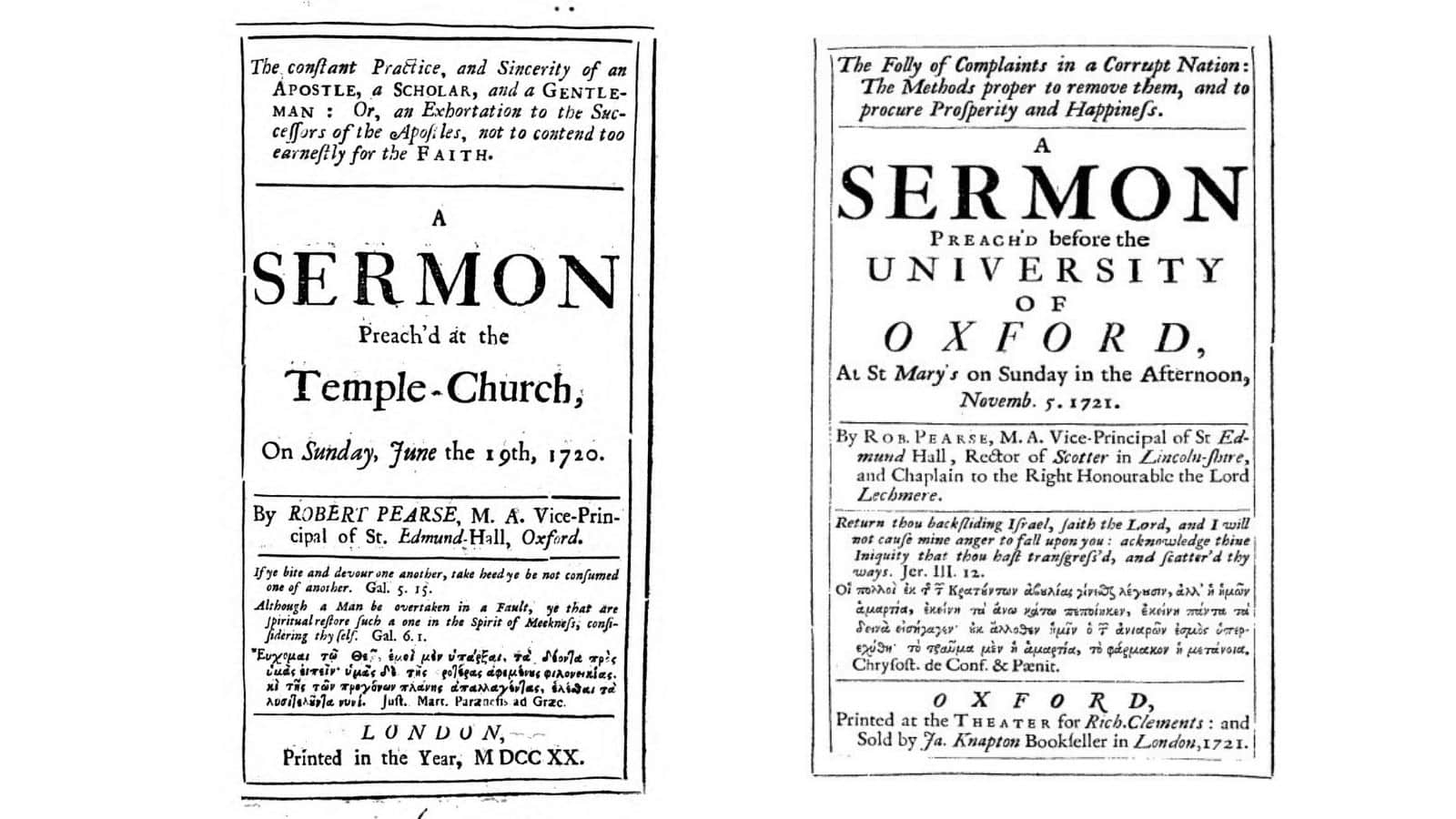
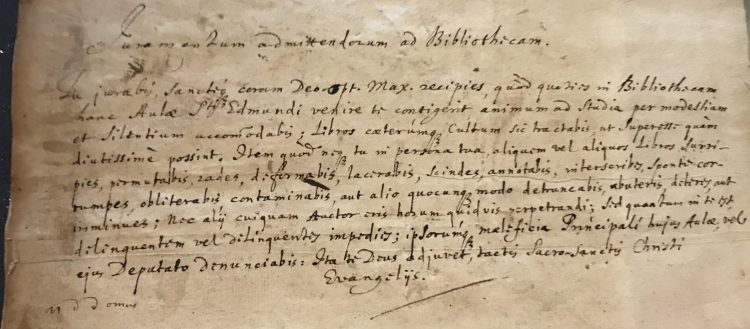
Who tore the book?
If Pearse’s hand in the notes on the Hall’s name are clear, the identity of the person of the person who tore them remains a mystery.
In his diary Hearne takes the high moral ground:
“The said Notes as they are not sense, so neither are they Latin, & may be permitted to stand on purpose to shew the Silliness & Folly & Ignorance of the Man.”
Hearne also notes that the author of the notes has done so “contrary to his Oath” of admittance to the Library, which forbids anyone to ‘annotate or write between the lines of’ the books. Tearing the offending annotations out is of course equally if not more so a breaking of the Library oath (which charges the swear to not ‘alter, scratch, deface, cut, tear… willingly spoil, stain or in any other way damage, abuse, impair or diminish the books’). On his account then Hearne is innocent.
Yet it is hard to imagine that anyone else could have been responsible. We have already seen that the damage seems rather clumsy rather than a deliberate and careful excision. Did ultimately the annoyance, and indeed insult, become too much for Hearne?
One thing that may have been an additional niggling factor was that the book itself had been purchased for the Library with money given by Hearne’s own benefactor, the Aularian Francis Cherry. Cherry, who was himself a non-juror, had paid for Hearne’s education including his study in Oxford. He was also a generous donor to the Hall. The Principal’s Ledger Book records a gift of £10 to purchase books including the Historia.
Was the (as he saw it) defacement of a book paid for by his friend and benefactor the final straw?
Possibly – especially as Hearne already had issues with how the donation has been spent and Cherry treated. That is however a story for another time.
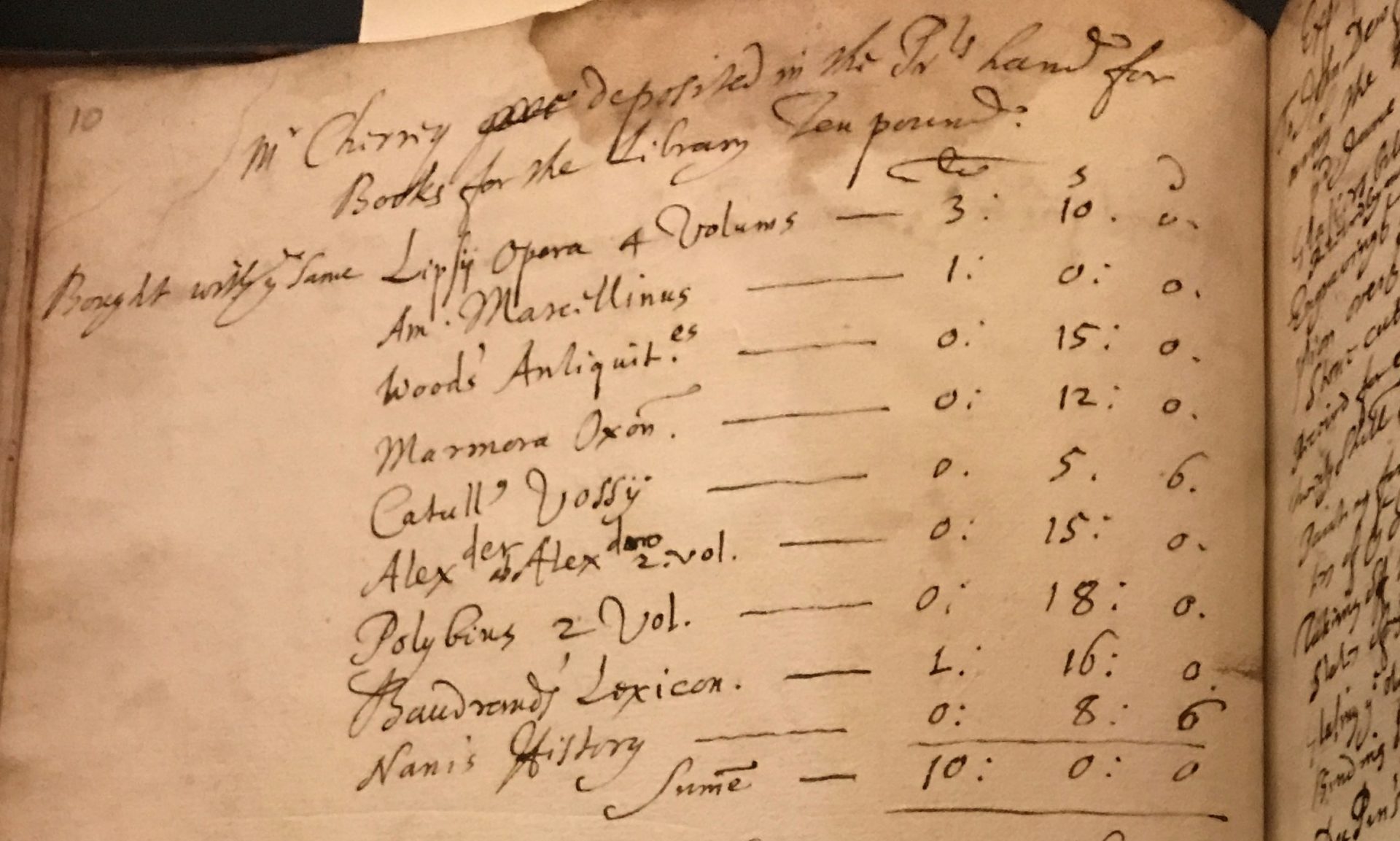
Category: Library, Arts & Archives
Author

James
Howarth
James has been St Edmund Hall’s Librarian since May 2018. He is responsible for maintaining and developing the library’s collections – including the historic and special collections that are housed in the seventeenth-century Old Library and is keen to promote their use in research, study and outreach.